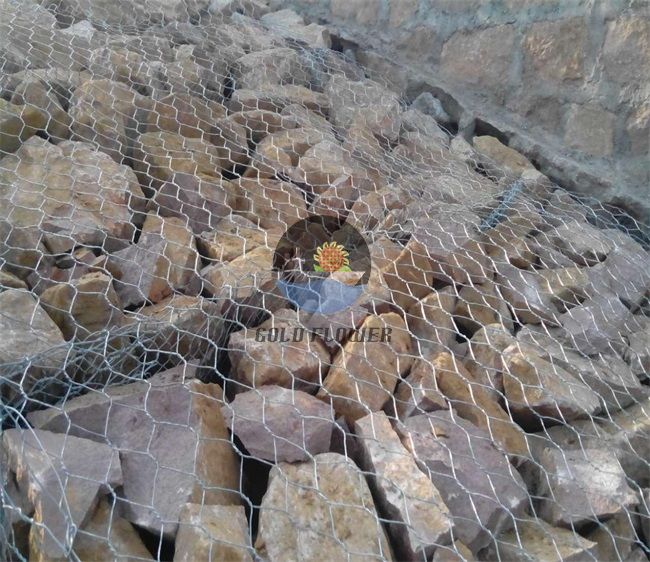Okt . 12, 2024 14:05 Back to list
Top Quality Knitted Metal Mesh for Versatile Applications and Exceptional Durability
Best Knitted Metal Mesh A Comprehensive Overview
In today's increasingly industrialized world, the demand for versatile materials has never been higher. Among these, knitted metal mesh has emerged as one of the most innovative and adaptable solutions, transcending traditional applications and redefining what is possible in various industries. From architecture to automotive, knitted metal mesh offers a unique amalgamation of strength, flexibility, and aesthetic appeal. This article explores the best knitted metal mesh options available today, highlighting their applications, advantages, and future potential.
What is Knitted Metal Mesh?
Knitted metal mesh is produced by interweaving metallic wires in a pattern that creates a fabric-like structure. Unlike traditional woven mesh, which employs a crisscross pattern, knitted metal mesh utilizes a series of loops, resulting in increased flexibility and elasticity. This unique construction allows it to maintain its shape while providing excellent tensile strength. The materials used in knitted metal mesh typically include stainless steel, aluminum, and copper, each offering distinct advantages depending on the intended application.
Applications Across Industries
1. Architecture and Interior Design Knitted metal mesh is increasingly popular in architectural applications due to its modern aesthetic and functional properties. It is often used in facades, ceilings, and partitions to create stunning visual effects while also allowing for light filtration and air circulation. Designers appreciate its ability to provide privacy without compromising visibility, making it a favorite for contemporary building designs.
2. Automotive Industry In the automotive sector, knitted metal mesh serves multiple purposes, from filtration systems to sound dampening materials. The flexible nature of the mesh allows it to conform to various shapes, making it ideal for use in exhaust systems and engine components. Additionally, its lightweight properties contribute to overall vehicle efficiency, making it an attractive option for manufacturers focused on sustainability.
3. Medical Applications The medical field also benefits from knitted metal mesh, particularly in surgical and implantable devices. The biocompatibility of materials like stainless steel allows for safe integration into the human body, while the mesh’s flexibility facilitates healing and minimizes trauma to surrounding tissues. Applications range from stents to wound dressings, showcasing the material's versatility in critical environments.
best knitted metal mesh

4. Industrial Filtration Knitted metal mesh is widely used in industrial filtration applications due to its excellent flow characteristics and durability. It can effectively filter large volumes of gases and liquids, making it suitable for chemical processing, food and beverage production, and environmental applications. The ability to customize mesh size and thickness allows for tailored solutions that meet specific filtration requirements.
Advantages of Knitted Metal Mesh
- Strength and Durability One of the most significant advantages of knitted metal mesh is its exceptional strength-to-weight ratio. The unique construction provides high tensile strength while remaining lightweight, making it suitable for demanding applications. - Flexibility and Adaptability The intricate loop design offers a level of flexibility that is unmatched by other types of mesh. This adaptability allows it to take various forms and be used in complex structures. - Aesthetic Appeal The visually striking nature of knitted metal mesh makes it an excellent choice for architectural and artistic applications. Its ability to create dynamic light patterns adds to its appeal in design-oriented projects. - Ease of Maintenance Metal mesh is easy to clean and maintain, ensuring longevity and reliability in various environments. The resistance to corrosion, particularly in stainless steel varieties, further enhances its durability.
Future Potential
As industries continue to innovate, the future of knitted metal mesh looks promising. Technological advancements are enabling the development of new materials and manufacturing processes, broadening the scope of applications. Sustainable practices, such as recycling and eco-friendly production methods, are also gaining traction within the sector, positioning knitted metal mesh as a responsible choice for the modern age.
Conclusion
In summary, the best knitted metal mesh options available today are not only versatile and functional but also visually appealing. Their applications span across numerous industries, proving their adaptability and effectiveness. As we move forward, the continued exploration of knitted metal mesh will undoubtedly yield even more innovative uses, cementing its place as a vital material for the future. Investing in knitted metal mesh is not just about choosing a product; it's about embracing a versatile solution that can adapt to the evolving needs of various sectors.
share
-
Wire Mesh Filter Elements Durable & Affordable Filtration Solutions
NewsMay.14,2025
-
Professional Chain Link Fence Installation Services Fast & Affordable
NewsMay.14,2025
-
Premium Dutch Woven Wire Cloth Exporter Durable & Versatile Solutions
NewsMay.13,2025
-
Best Galvanized Wire Mesh for Gabion Baskets OEM & Durable
NewsMay.13,2025
-
High-Efficiency Air Filter Manufacturer Compressor & AC Filters
NewsMay.12,2025
-
High-Performance Air Filters Boost Airflow & Equipment Protection
NewsMay.12,2025

